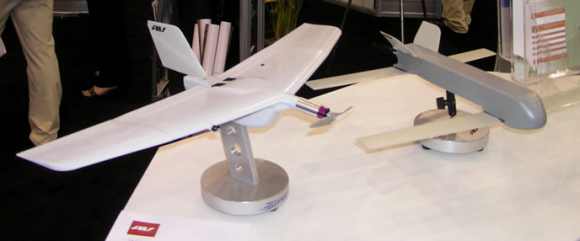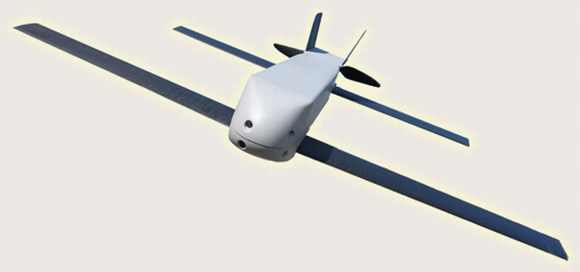
United States forces are poised to deploy pint-sized drones, small enough to fit into soldier's rucksack, but packed with tiny explosive warheads enough to blast targets with pinpoint accuracy.
The new drones christened 'Switchblade' weighs less than six pounds and takes out a sniper on a rooftop without blasting the building and Pentagon has given the go ahead for deployment of these mini killer machines, Los Angeles Times reported quoting Pentagon officials.
The deployment of Switchblades has been made a top priority by Pentagon as Washington is seeking to reduce civilian casualties and collateral damage in Afghanistan, Pakistan and other battle zones.
About a dozen Switchblades were tested last year by special operations units in Afghanistan, according to army officials who said the drones proved effective.
L A Times quoted officials saying that the US army is considering buying $100 million worth of these mini drones under a programme called Lethal Miniature Areal Munition System. The Air force and the Marine Corps have also expressed interest in the technology.
...

The deployment of mini killer drones comes, LA Times said amid reports of the Obama administration giving a nod to the Central Investigation Agency to step up drone strikes in Pakistan.
Angry over Islamabad's refusal to crackdown on Haqqani network militants who cross into Afghanistan, the US is approving strikes that it might have vetoed before, the paper said.
The new Switchblade drone enables soldiers in the field to identify and destroy targets much more quickly by eliminating the need to call in a strike from large drones that may be hundreds of miles away.
Errant drone strikes have been blamed for killing and injuring scores of civilians throughout Pakistan and Afghanistan, giving the US government a black eye as it targets elusive terrorist groups.
The Predator and Reaper drones deployed in these regions typically carry 100-pound laser-guided Hellfire missiles or 500-pound GPS-guided smart bombs that can reduce buildings to smoldering rubble.
"This is a precision strike weapon that causes as minimal collateral damage as possible," said William I Nichols, who led the army's testing effort of the Switchblades at Redstone Arsenal near Huntsville, Ala.

The two-foot-long Switchblade is so named because its wings fold into the fuselage for transport and spring out after launch. It is designed to fit into a soldier's rucksack and is fired from a mortar-like tube. Once airborne, it begins sending back live video and GPS coordinates to a hand-held control set clutched by the soldier who launched it.
When soldiers identify and lock on a target, they send a command for the drone to nose-dive into it and detonate on impact. Because of the way it operates, the Switchblade has been dubbed the "kamikaze drone."
The Obama administration, notably the CIA, has long been lambasted by critics for its use of combat drones and carelessly killing civilians in targeted strikes in Pakistan, Afghanistan, Iraq, Yemen and Somalia.

In recent weeks, White House spokesman Jay Carney was asked about the issue at a recent news briefing, and he said the Obama administration is committed to reducing civilian casualties.
Although Carney did not mention the Switchblade specifically, he said "we have at our disposal tools that make avoidance of civilian casualties much easier, and tools that make precision targeting possible in ways that have never existed in the past."
The Switchblade is assembled in Simi Valley by AeroVironment Inc, the Pentagon's top supplier of small drones, which include the Raven, Wasp and Puma. More than 50 Switchblades will be sent to the war zone in Afghanistan this summer under a $10.1-million contract, which also includes the cost of repairs, spare parts, training and other expenses.
Officials would not provide details about where the weapons would be used, how many were ordered and precisely when they would be deployed.
...